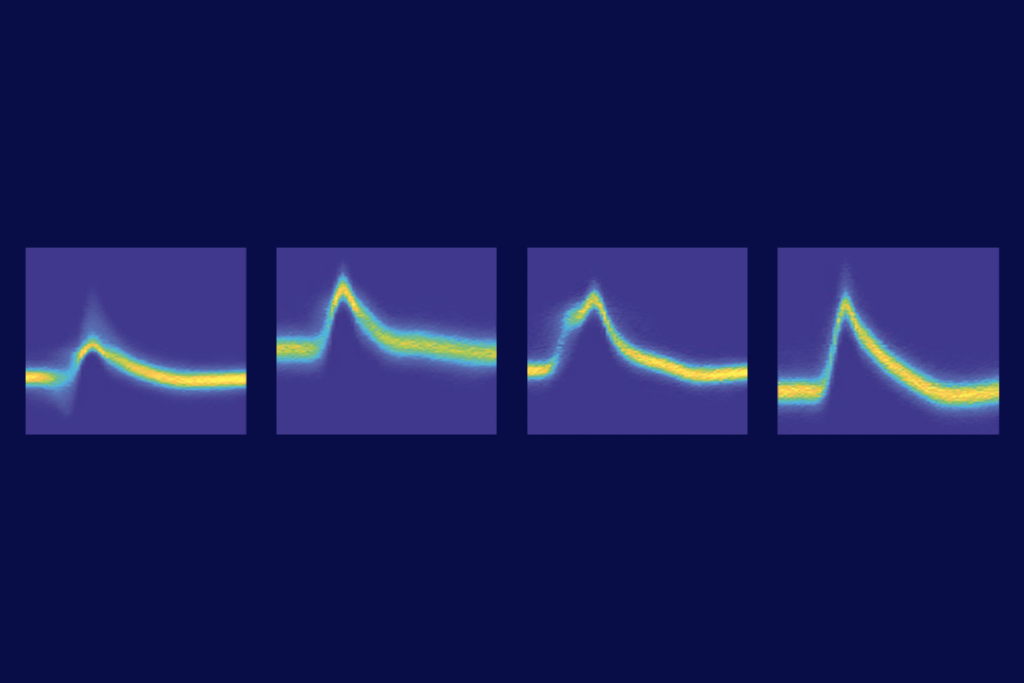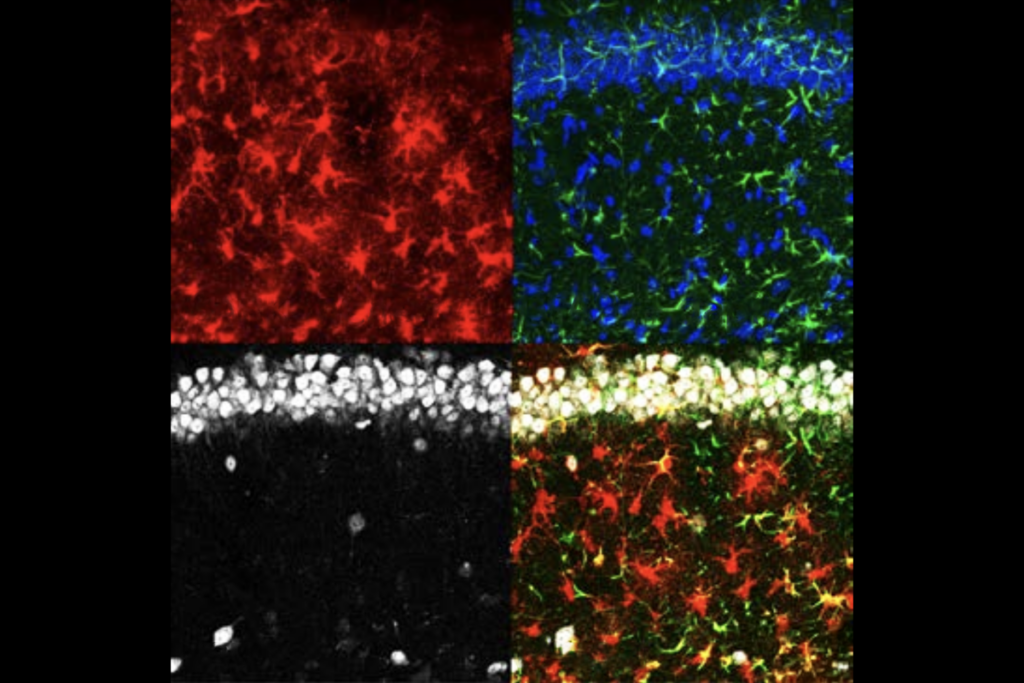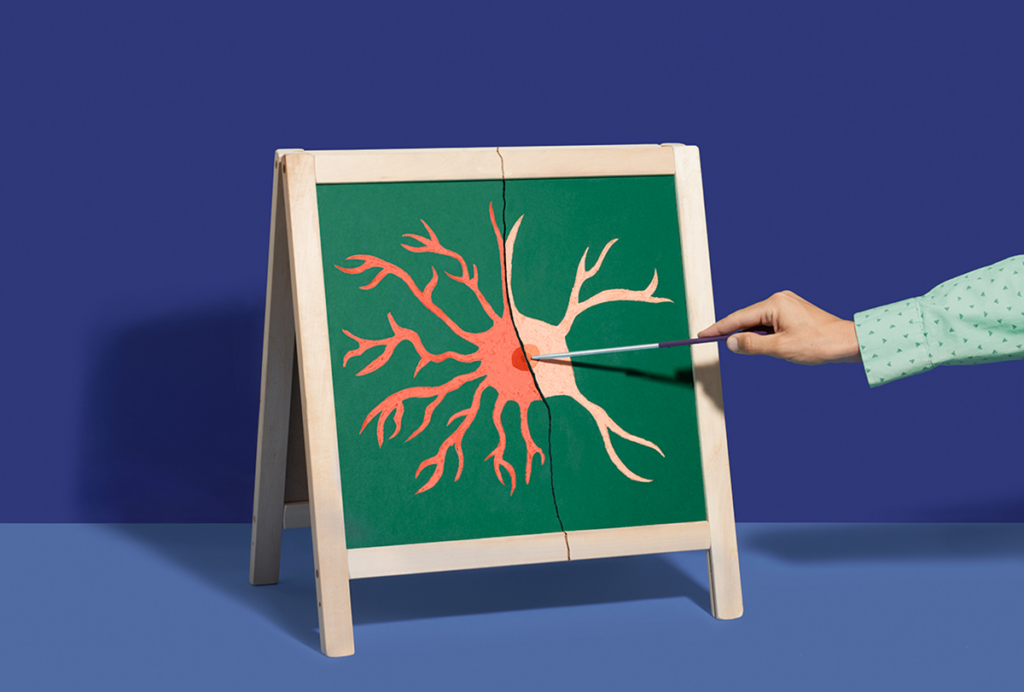Chromosome 15 region associated with autism, epilepsy
A specific deletion on chromosome 15 occurs in one percent of people with a common form of epilepsy, establishing the mutation as the most common risk factor for the disorder, according to research published online 11 January in Nature Genetics.
A specific deletion on chromosome 15 occurs in one percent of people with a common form of epilepsy, establishing the mutation as the most common risk factor for the disorder, according to research published online January 11 in Nature Genetics 1.
Previous work has linked the same deletion, involving at least seven genes in the 15q13.3 region, with autism, schizophrenia and mental retardation. This study is the first to link the region to idiopathic generalized epilepsy (IGE), a group of epilepsy disorders thought to have an underlying genetic basis, broadening the range of disorders associated with the deletion.
Itʼs not unusual to have a specific deletion lead to diverse outcomes. For example, a small region of chromosome 16 is deleted or duplicated in people with autism as well as in a small proportion of the general population.
Certain regions of chromosome 15 are prone to recombination, sometimes leading to missing or duplicated genetic material.
For instance, deletions in the 15q11.13 region can lead to neuro-developmental disorders such as Angelman and Prader-Willi syndromes, two clinically distinct disorders that share some genetic and behavioral features of autism. Duplications of the same region are also found in up to three percent of people with autism2.
In this study, researchers analyzed the genes of 1,223 people with idiopathic generalized epilepsy. They uncovered the 15q13.3 deletion in 12 people, compared with none in the 3,699 healthy controls.
“The really striking finding is that [the deletion] explains one percent of generalized epilepsy, which is huge because epilepsy is thought to be multi-factorial with many genes involved,” says Evan Eichler, professor of genome sciences at the University of Washington in Seattle, who co-led the study.
“To have one single mutation, which is this deletion, in this very significant portion of individuals with generalized epilepsy was a surprise,” Eichler adds.
Diverse outcomes:
Over the past few years, studies have revealed that 15q13.3 microdeletions ― dubbed ‘microʼ because they produce chromosomal changes too small to be seen under a microscope ― are enriched in small subsets of people with various neuro-psychiatric conditions.
In 2006, Eichlerʼs group found that the 15q13 region, along with four other sites on the genome, is significantly rearranged in people with mental retardation compared with healthy controls3.
After further analysis, the researchers identified specific microdeletions in 15q13.3 in 6 of 2,082 ― or 0.3 percent ― people with mild to moderate mental retardation, many of whom also have seizures4.
In September 2008, two studies showed that the 15q13.3 microdeletion occurs in 0.2 to 0.3 percent of people with schizophrenia5,6.
A study published in November also linked microdeletions of 15q13.2 and 15q13.3 to autism spectrum disorder or features of autism7. In a second study published in December, researchers identified three boys with autism from one family with a 15q13.3 microdeletion8. None of the individuals with autism in either study had had seizures.
Because each study used different cohorts, diagnoses seldom overlapped across studies. In the latest study, Eichler says, there is no evidence of autism or schizophrenia in the people with the 15q13.3 microdeletion. But his group observed severe intellectual disability in 1, and mild disability in 2, of the 12 people with the microdeletion.
Given the small numbers of people who have the microdeletion, the lack of overlap in phenotypes is not surprising, says Dennis Wall, director of Harvard Medical Schoolʼs Computational Biology Initiative.
Larger studies with more detailed phenotyping may reveal whether people with the microdeletion share any behavioral or biological characteristics, he says.
But phenotyping, especially for multi-site studies, can vary widely ― “enough to leave open the possibility that these 12 may or may not have other impairments that were simply missed,” Wall says.
In addition, says Susan Christian, associate professor of human genetics at the University of Chicago, there are likely to be other genetic interactions involved in the different disorders.
“The microdeletion alone will not cause a particular disease but will interact with other different mutated genes to cause the multiple disorders,” she says.
Eichlerʼs group is screening more individuals with idiopathic epilepsy to determine whether specific genes are involved. At least one candidate, CHRNA7, which regulates signaling between two nerve cells, has previously been implicated in a rare form of epilepsy.
References:
-
Helbig I. et al. Nat. Genet. Epub ahead of print (2009) Abstract
-
Cook E.H. Jr. et al. Am. J. Hum. Genet. 60, 928-934 (1997) PubMed
-
Sharp A.J. et al. Nat. Genet. 38, 1038-42 (2006) PubMed
-
Sharp A.J. et al. Nat. Genet. 40, 322-328 (2008) PubMed
-
The International Schizophrenia Consortium Nature 455, 237-241 (2008) PubMed
-
Stefansson H. et al. Nature 455, 232-236 (2008) PubMed
-
Miller D.T. et al. J. Med. Genet. Epub ahead of print (2008) PubMed
-
Pagnamenta A.T. et al. Eur. J. Hum. Genet. Epub ahead of print (2008) PubMed
Recommended reading

INSAR takes ‘intentional break’ from annual summer webinar series

Dosage of X or Y chromosome relates to distinct outcomes; and more
Explore more from The Transmitter

Null and Noteworthy: Neurons tracking sequences don’t fire in order


